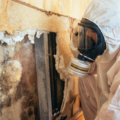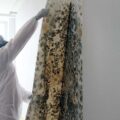
In the bustling urban landscape of Singapore, with high humidity levels, maintaining optimal indoor air quality is paramount for both residential and commercial spaces. Mold, an insidious invader, poses a significant threat to not only structural integrity but also to the health and well-being of occupants. Although often overlooked, air quality plays a pivotal role in preventing mold growth and ensuring effective restoration in environments affected by mold infestations. This blog post delves into the intricate relationship between air quality and mold, offering insights into prevention strategies and restoration techniques.
Understanding Mold and Its Health Impacts
What is Mold?
Mold is a type of fungus that thrives in environments that many of our indoor spaces inadvertently provide—dampness, warmth, and humidity. Common indoor molds like Cladosporium, Penicillium, and Aspergillus reproduce through the release of microscopic, airborne spores and settle on surfaces, where they can begin to grow. These molds are typically found in damp areas such as bathrooms, basements, and kitchens.
Health Risks
Exposure to mold can lead to a spectrum of health issues, ranging from mild allergic reactions to severe respiratory complications. Mold spores trigger sneezing, coughing, skin rashes, and eye irritation. For individuals with pre-existing respiratory conditions like asthma or those with compromised immune systems, mold exposure can exacerbate symptoms and potentially lead to chronic respiratory illnesses.
The Centers for Disease Control and Prevention (CDC) has reported that even in healthy individuals, prolonged mold exposure can cause respiratory symptoms. Furthermore, emerging research suggests that extended exposure to certain mold species may impact cognitive function and overall well-being, underscoring the importance of effective mold prevention and control strategies.
Factors Affecting Mold Proliferation
Humidity and Moisture
Elevated humidity levels serve as a primary catalyst for mold growth. Mold thrives in environments where relative humidity exceeds 60%. Sources of moisture, including water leaks, flooding events, or persistently high humidity, create ideal conditions for mold colonization. Effective moisture control is therefore crucial in mitigating mold growth.
Temperature
Mold exhibits optimal growth within a temperature range of 25°C to 30°C. However, certain mold species demonstrate resilience, capable of growth in temperatures as low as 0°C and as high as 40°C. Maintaining stable and moderate indoor temperatures is essential in inhibiting mold proliferation.
Ventilation
Proper ventilation plays a critical role in preventing mold growth. Inadequate air circulation can lead to increased humidity levels and stagnant air, creating microclimates conducive to mold development. Ensuring adequate ventilation, particularly in areas prone to moisture accumulation such as bathrooms and kitchens, significantly reduces the risk of mold infestations.
Proactive Mold Prevention Through Air Quality Management
Humidity Control
Maintaining indoor humidity levels between 30% and 50% is key to preventing mold growth. Dehumidifiers can be used in areas with high humidity to remove excess moisture from the air. Regularly using air conditioners and exhaust fans can also help maintain optimal humidity levels. We recommend routine checks and the use of humidity control devices to keep indoor moisture levels in check.
Ventilation and Air Circulation
Effective ventilation is instrumental in reducing moisture levels and promoting air circulation, both of which are vital in preventing mold growth. Ensuring proper ventilation in areas susceptible to dampness can significantly impede the settling and proliferation of mold spores. Simple yet effective measures such as opening windows, utilizing fans, and installing advanced ventilation systems can yield substantial benefits.
Air Purification
The deployment of air purifiers equipped with High-Efficiency Particulate Air (HEPA) filters can effectively trap airborne mold spores, preventing their settlement on surfaces. Regular utilization of air purification systems can maintain air quality and reduce the concentration of mold spores, particularly in areas with elevated mold potential.
Monitoring and Enhancing Indoor Air Quality
Air Quality Monitoring Devices
The implementation of indoor air quality monitoring devices enables the detection of humidity levels, temperature fluctuations, and particulate matter concentrations. These advanced monitoring systems provide real-time data, facilitating timely adjustments to maintain optimal air quality. We strongly recommend using air quality monitors to proactively track environmental conditions and prevent the development of mold-friendly microclimates.
Strategic Use of Dehumidifiers and Humidifiers
In regions characterized by high humidity, such as Singapore, dehumidifiers serve as effective tools in reducing ambient moisture levels, thereby preventing mold growth. Conversely, in environments prone to excessive dryness, humidifiers can introduce moisture to the air, preventing conditions that may lead to other air quality issues.
Routine Maintenance Protocols
Regular maintenance of Heating, Ventilation, and Air Conditioning (HVAC) systems, including thorough cleaning and filter replacement, ensures optimal air circulation and minimizes the risk of mold spore dissemination. Prompt attention to water leaks or damage is crucial in preventing mold growth.
Restoration Techniques in Mold-Infested Areas
Comprehensive Initial Assessment
The first step in effective mold remediation involves thoroughly assessing the extent of contamination. This process includes a detailed inspection of affected areas, identification of moisture sources, and determination of mold species and spread patterns guiding the development of a tailored remediation strategy.
Containment and Removal Procedures
Proper containment of affected areas is crucial in preventing the spread of mold spores to uncontaminated sections of the building. This process typically involves sealing off the affected area with polyethylene sheeting and implementing negative air pressure to contain spores. Mold removal is executed using specialized cleaning agents and state-of-the-art equipment to ensure thorough decontamination.
Air Quality Restoration Protocols
Restoring air quality post-mold removal involves the utilization of advanced air scrubbers and ozone generators to eliminate residual mold spores from the air. These sophisticated devices purify the air, ensuring that the environment is rendered safe for occupancy.
Post-Restoration Monitoring and Maintenance
Continuous monitoring of air quality following restoration is essential to prevent mold recurrence. Regular inspections and maintenance protocols help sustain a mold-free environment and safeguard long-term indoor air quality.
Key Insights and Best Practices
These case studies underscore the critical importance of maintaining superior air quality in preventing mold growth and ensuring effective restoration. Key takeaways include the necessity for regular monitoring, implementation of proper ventilation systems, and immediate action in addressing moisture-related issues. Big Red’s expertise in mold prevention and restoration ensures that both residential and commercial spaces in Singapore remain safe, healthy, and mold-free environments.
Conclusion
Maintaining optimal air quality is paramount in preventing mold growth and ensuring effective restoration in mold-affected areas. By comprehending the factors contributing to mold proliferation and implementing strategic measures to control air quality, individuals and businesses can safeguard their health and property from the deleterious effects of mold infestations.
Big Red’s comprehensive mold prevention and restoration services offer unparalleled expertise and results, assisting clients in maintaining healthy, mold-free environments. By prioritizing air quality management, we can create healthier, mold-resistant spaces that protect our health and well-being.
Choose Big Red for unmatched carpet cleaning and allergy prevention services in Singapore, and ensure your residential or commercial space remains a safe, healthy, and mold-free environment. With Big Red’s expert solutions, you can breathe easy, knowing your indoor air quality is in capable hands.




